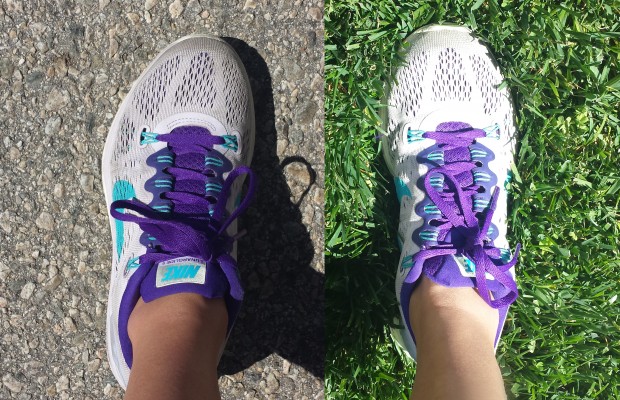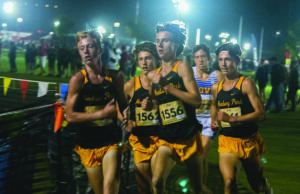Wasteful runs in the concrete jungle: Why marathons don’t belong in the city

Downtown LA traffic. No other words even need to be spoken for this phrase to immediately conjure an image of a long, solid mass of red tail lights and white front lights crammed into thin, 3-lane strips of highway. Even in the local streets, cars and buses meander through Los Angeles’s awkward curvy streets and cross intersections by turning about 27° to the right as pedestrians stroll leisurely across sunny pavement, much to the irritation of drivers who need to get somewhere quick in this city of “laid-back vibes.”
Apparently, marathon planners agree that adding quite a few handfuls of people — or in fact 20,000 handfuls, if a human hand can hold one person — to such an environment would be no problem. But these people are not sedentary beings: As marathon runners, they need 42.195 kilometers to scramble across. And, this scramble needs to be safe; in other words, marathoners need the whole road, so the police blockade the streets and force motorists to find alternate routes.
The truth is that marathons don’t belong in the concrete downtown jungle of a large city. As if traffic conditions were not already fragile, marathons exacerbate the issue, with their plastic stop signs destroying any sort of flow to city transportation. It doesn’t help either that marathons will inevitably last up to eight hours, and their aftereffects (aka cleanup time) will last another two more. Sure, marathon managers make sure to host these distance runs on Sundays and start off early in the morning to decrease actual impact on the traffic; however, there’s still no doubt that marathons are a massive pain to anyone who happens to commute in the city at the same time, especially when you happen to commute only on the holy days when marathons are ever held.
Here’s what it feels like: First, you suddenly come upon a total standstill on the highway on a Sunday noon when people should be having their post-church lunches or are sleeping in. In confusion, you wonder if it’s an accident, then feel slightly annoyed when you can see the building right next to your destination on the near horizon, which you could have reached in the amount of time you just spent waiting in traffic. Then, as you inch forward at 0.01 miles per hour, you inwardly curse the one or two idiots who clearly don’t know how to drive and caused this backup. Suddenly, some murky memory floats to the forefront of your attention, and you vaguely remember an email or a television news report about a marathon in the city. Your cursing instantly applies to 20,000 more people. Finally, eons later as you pass through the majestic patches of shade cast by towering, glittering buildings to reach your destination, you make sure you give angry glares to those plastic traffic signs (they aren’t even red, they’re orange! Such wannabes).
Of course, I might be biased because I happen to only go to LA on Sundays, so I’ve had proportionally greater exposure to the marathons’ flout than usual. But I don’t think it’s just about the traffic effects; it’s also the fact that the city is meant to be toured and walked, not run upon. The streets are hard, the air is smoggy, and the buildings pass by in a flash. Isn’t the point of running a marathon to go outside and challenge yourself, as opposed to inside on a treadmill, surrounded by machines? Nature provides such a landscape for feeling the outside: It’s expansive, so runners won’t miss on the scenery since they’re surrounded by it everywhere. It’s clean, so participants can gasp for fresh air rather than gasp for pollutants, ironically giving themselves lung cancer during their attempt to be physically healthy. (Just kidding, of course. We live in America. China is a different story. But my point still stands for fresh air.)
I know marathons in natural parks or less congested suburban areas already exist. But the city marathon is really unnecessary, predominantly for the reasons that it causes traffic trouble and doesn’t fully appreciate the city anyways, as the beauties of the buildings, shops and street life are swept away in a fly-by blur. Perhaps if the marathons didn’t insist on taking up so much street space, they’d be a little OK. However, they’d be way more than OK — they’d be great — if they took participants to appreciate the real, not concrete, jungle of our homeland.



